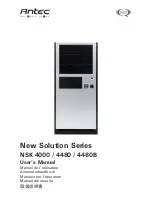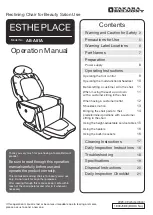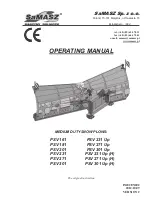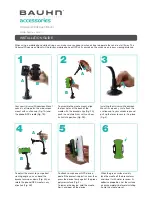
PAGE 13
Load and Throw the Ball
CAUTION: Be Safe! Batters must wear
helmets. Keep children away from the
pitching machine. Turn the machine
off before leaving it unattended. You
can be seriously injured if you are
struck by a ball thrown from the
pitching machine.
Loading the ball initiates a throw. The
machine pumps up to pressure and
throws the ball. Pitch speed in miles
per hour (MPH) is displayed after each
pitch. The machine repeatedly throws
pitches at the same speed until you
change the power level setting.
The pitching machine can use a number
of different types of balls. Typically, balls
of different weight or rebound charac-
teristics will be thrown at different
speeds and therefore arrive at the
plate at different heights. Approved
ball types are described on page 14.
CAUTION: Always remember to
throw a few test pitches to check the
aim point and speed of the ball before
pitching to the batter.
To load a ball, take the following steps:
1. Use an approved ball as described
in the section titled, “Selecting the
Type of Ball” on page 14.
2. Always load the ball while standing
to the side of the machine. See
Diagram 15.
3. Check that the line-of-fire is clear.
4. Cup a ball in your hand and gently
roll it into the barrel. As the ball
passes the optical sensors, the
compressor is activated and runs
for a few seconds (depending upon
the power level).
The machine provides an audible
and visual countdown, throws the
pitch, and displays the speed in
miles per hour (MPH).
If you block the optics while loading
a ball, the machine will turn OFF.
Avoid placing fingers inside the
barrel while feeding a ball.
NOTE:
When the ball is rolled in
at the proper speed, it seats itself
in the cup. A roll that is too fast
or too slow may cause the ball to
bounce out of the cup. If the ball
is not seated in the cup, the pitch
is thrown at a slow speed with a
hollow sound. Most duds result
from rolling the ball in too quickly.
5. To adjust the power level setting for
the next pitch, press the
▲▼
buttons.
6. Load another ball to initiate the
next pitch.
DIAGRAM 15
LOADING THE BALL
Summary of Contents for ZS 720
Page 1: ......














































